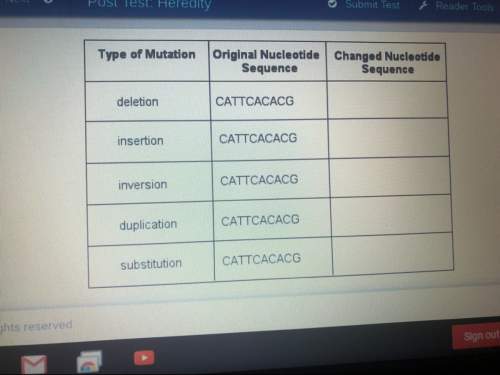
Biology, 21.02.2020 19:41 natalie4085
Leukemia is a cancer of white blood cells, or leukocytes. Like other blood cells, leukocytes develop from somatic stem cells.
Mature leukocytes are released into the bloodstream, where they work to fight off infections in our bodies. Leukemia results
when leukocytes begin to grow and function abnormally, becoming cancerous. These abnormal cells cannot fight off
infection, and they interfere with the functions of other organs. Successful treatment for leukemia depends on getting rid of
all the abnormal leukocytes in the patient, and allowing healthy cells to grow in their place. One way to do this is through
chemotherapy, which uses drugs to target and kill abnormal cells. When chemotherapy alone is not successful physicians
sometimes turn to bone marrow transplants.
bone marrow transplant includes several steps. Order the
for a
successful transplant to cure leukemia.
A. donor match located
B. a sample of donor bone marrow containing healthy stem cells is introduced into the patient's bloodstream
C. patient's existing bone marrow and abnormal leukocytes are killed using a combination of chemotherapy and
radiation
D. donor stem cells will migrate to patient's bone marrow and begin producing healthy leukocytes

Answers: 1


Another question on Biology

Biology, 21.06.2019 17:00
In tossing one coin 10 times, what are your chances for tossing a head? a tail? 2. in tossing one coin 100 times, what are your chances for tossing a head? a tail? 3. in tossing one coin 200 times, what are your chances for tossing a head? a tail? deviation = ((absolute value of the difference between expected heads and observed heads) + (absolute value of the difference between expected tails and observed tails)) divided by total number of tosses. this value should always be positive. 4. what is the deviation for 10 tosses? 5. what is the deviation for the 100 tosses? 6. what is the deviation for 200 tosses? 7. how does increasing the total number of coin tosses from 10 to 100 affect the deviation? 8. how does increasing the total number of tosses from 100 to 200 affect the deviation? 9. what two important probability principles were established in this exercise? 10. the percent of occurrence is the obtained results divided by the total tosses and multiplied by 100%. toss the coins 100 times and record your results. calculate the percent occurrence for each combination. percent head-head occurrence: percent tail-tail occurrence: percent head-tail occurrence:
Answers: 1


Biology, 22.06.2019 07:00
Which best describes a gene? a. a sister chromatid b. a chromosome c. a tetrad d. a piece of a chromosome
Answers: 2

Biology, 22.06.2019 08:00
Which set of terms best describes a community of miners who live out in the countryside of west virginia and use specialized geological equipment to analyze the composition of rock?
Answers: 1
You know the right answer?
Leukemia is a cancer of white blood cells, or leukocytes. Like other blood cells, leukocytes develop...
Questions



Social Studies, 08.11.2019 20:31


Mathematics, 08.11.2019 20:31

Mathematics, 08.11.2019 20:31

Mathematics, 08.11.2019 20:31

Mathematics, 08.11.2019 20:31

Mathematics, 08.11.2019 20:31

Mathematics, 08.11.2019 20:31




History, 08.11.2019 20:31









